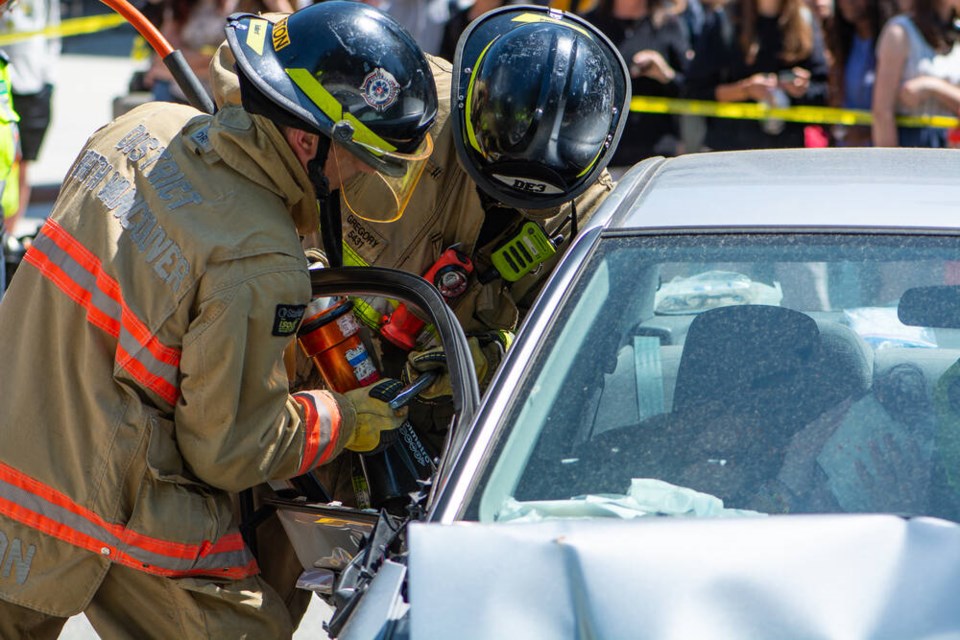It’s one of the only situations where you’d want to see the Jaws of Life used to rip off the door of a totalled car.
During a mock crash event Friday afternoon at Ecole Handsworth Secondary, the events were fake – but the reality of horrific accidents, including those that happen around high school grad season, are real.
While the real consequences of dangerous driving are challenging to impart on a teenage audience, that’s precisely what organizers were trying to do at the mock crash, which featured a dramatized response by firefighters, police and paramedics to a severe crash involving drama students at the school.
The scene starts with a student making a 911 call and describing the scene to a dispatcher. A fire crew is first to arrive on scene, followed by police and paramedics. The first responders assess the scene and decide which crash participants can be more easily removed from the vehicles, and which have to be stabilized in place.
One of the cars is so badly damaged that firefighters deploy the Jaws of Life, a life-saving pneumatic tool, to rend one of the doors off and access the pretend patients inside. Meanwhile, the driver of the other car undergoes a breathalyzer test.
The whole scenario was narrated by Cpl. Paulo Arreaga of North Vancouver RCMP.
“Our goal here is to let the students know the risks of driving dangerously, not paying attention, and how it can affect them as occupants, drivers, or their family and their community as a whole,” he said.
“Now that grad season is coming up … they can pass that information out to their family and friends, just to be careful and slow down.”
One approach taken by educators is to convince youth to honour their friendships.
“Prove that you care about your friend by putting your phone away, by letting them know, ‘Hey, I’ll let you know when I get there,’” said Ted Swan, a 35-year paramedic and road safety speaker with ICBC, who gave a presentation to Handsworth students after the mock crash.
Youth in the 16- to 21-year-old age group are highly over-represented in vehicle accidents, particularly fatal ones, Swan said. The top three causes remain: speed, driver distraction and impairment.
“Of course, by impaired [driving] everybody immediately thinks of alcohol, but we’re also including drugs and sleep. Somebody’s coming home after a long shift and they’re really sleepy, that’s also an impaired situation,” he said.
Even though grad season tragedies have struck the North Shore, convincing kids that bad things could happen to them can seem like an insurmountable task.
An opportunity like the mock accident can evoke a visceral response when you see just how serious situations can become, said Handsworth principal Mark Barrett.
“You’re not going to convince all students with one fell swoop like this, but incrementally if one student makes one better decision or you can encourage a friend to make one different choice, then I think the likelihood of better outcomes for kids is there,” he said.




